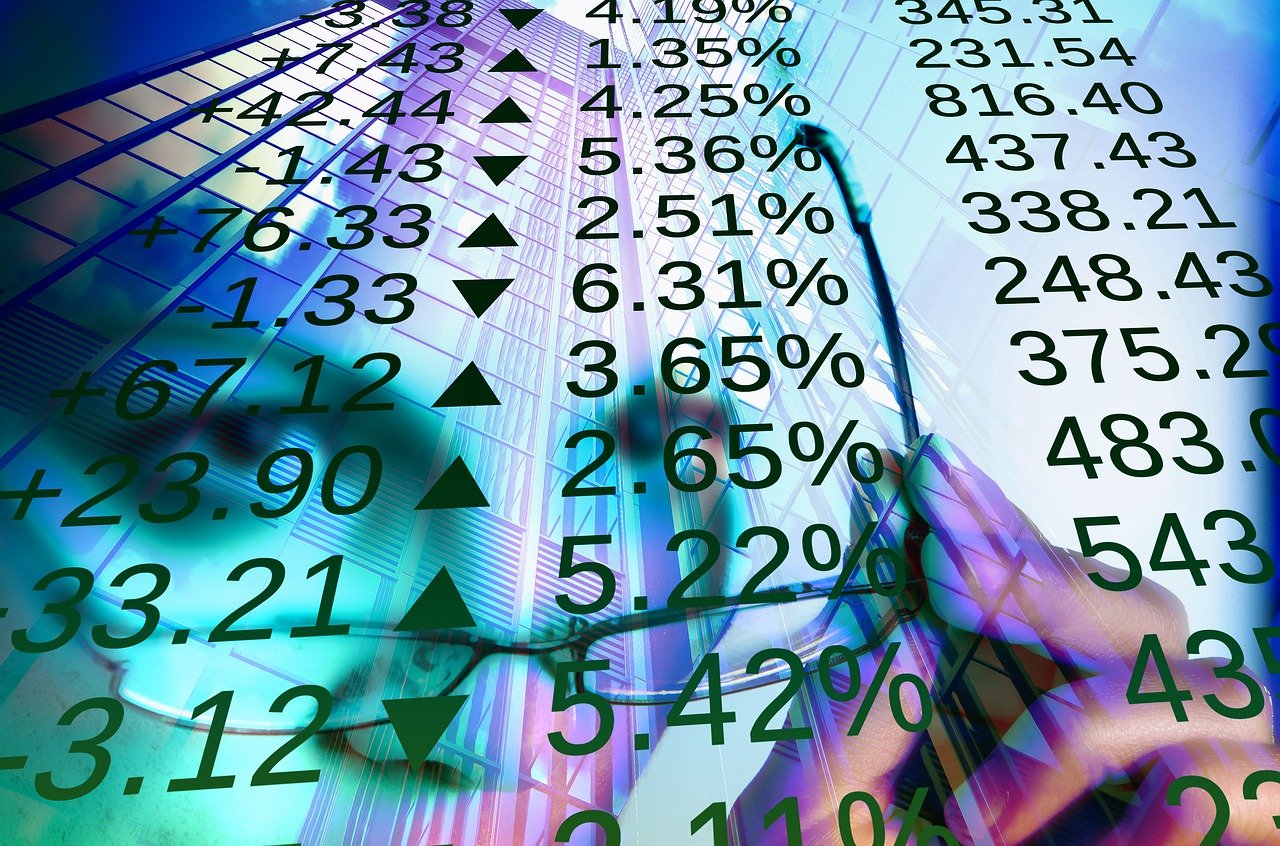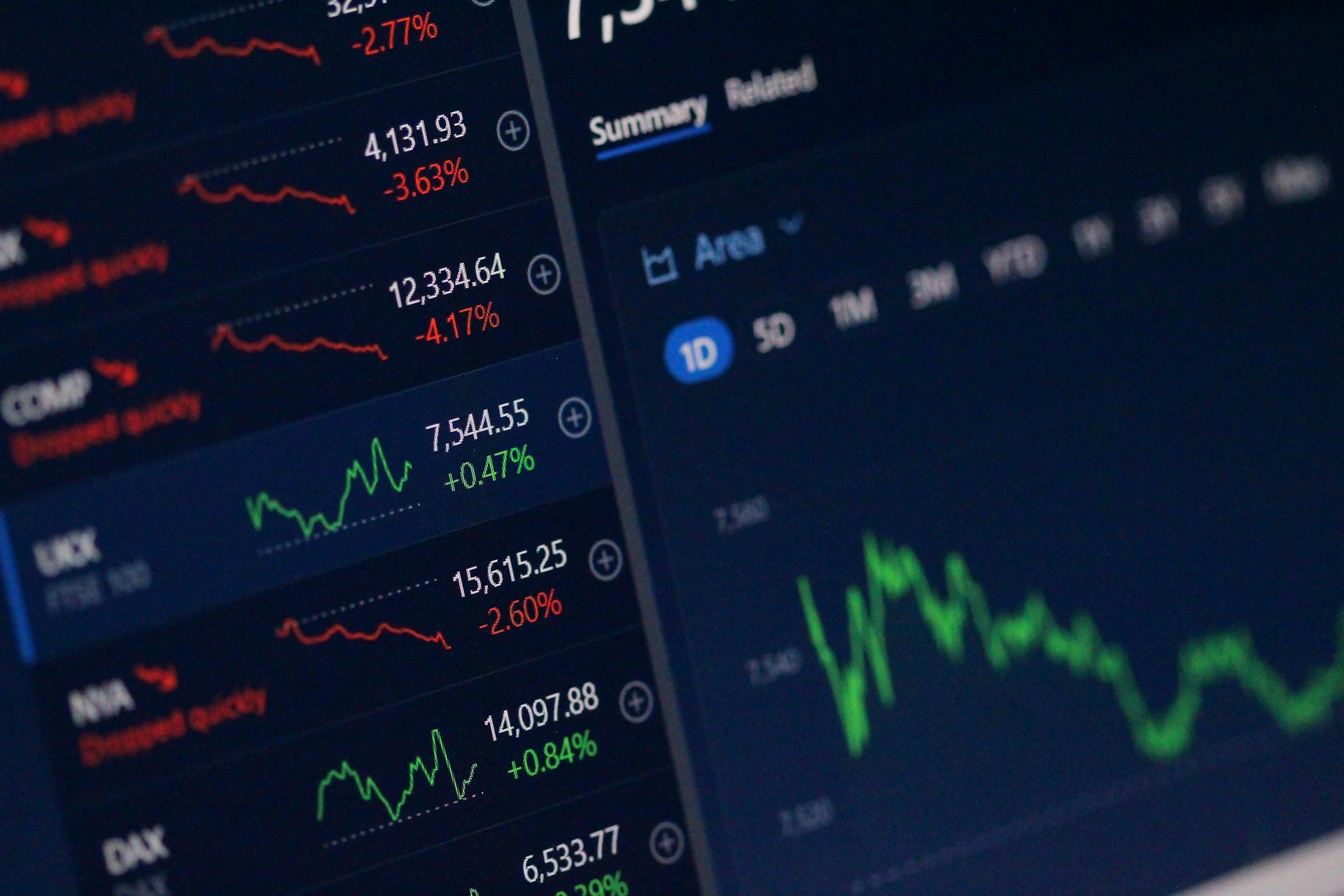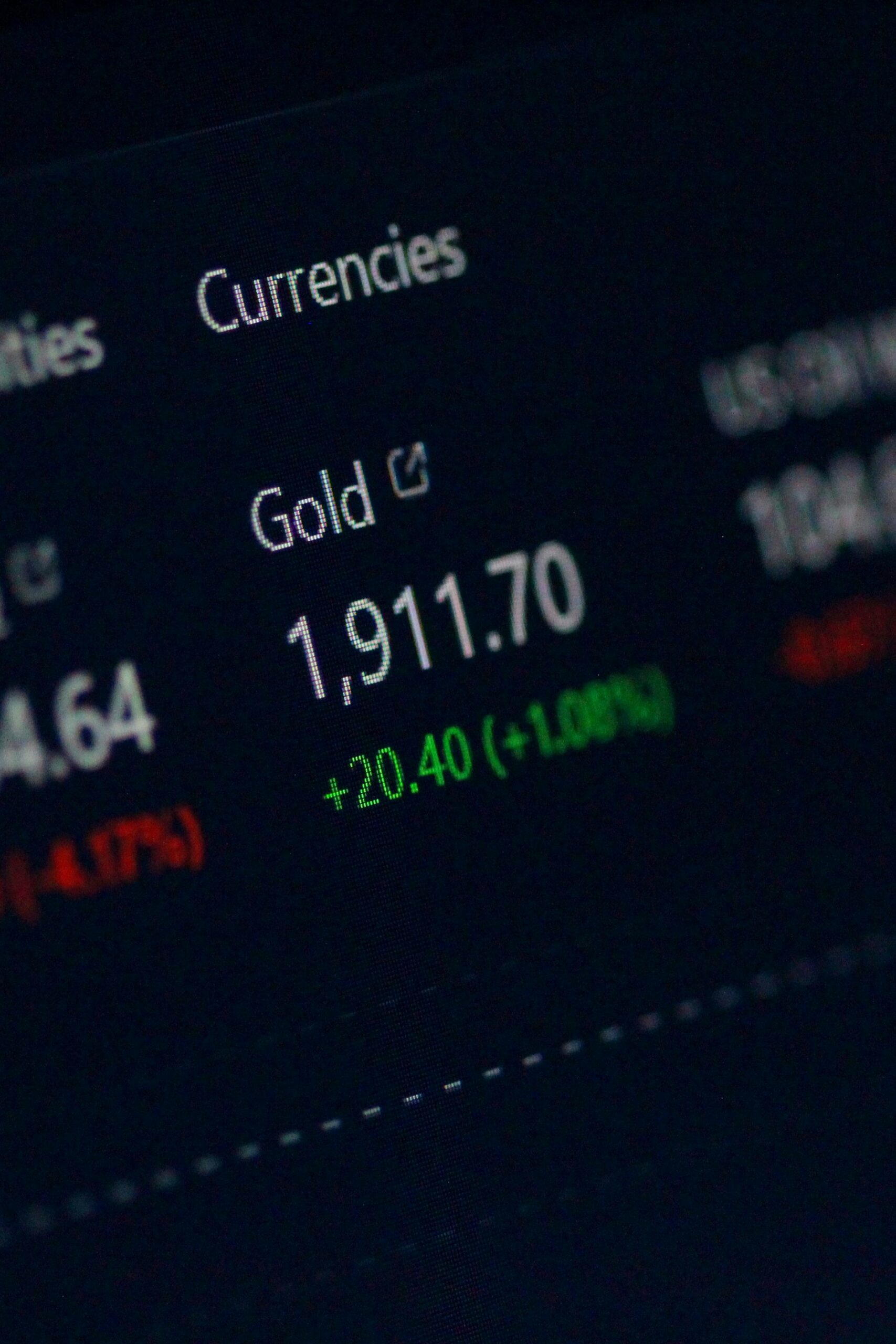A Key Metric for Smart Investing
In the dynamic world of finance and investing, one concept stands out as a fundamental principle for valuing stocks: intrinsic value. This metric goes beyond the surface-level fluctuations of stock prices and dives deep into the core worth of a company. Understanding intrinsic value is crucial for investors who seek to make informed decisions, maximize their returns, and build a robust, long-term investment strategy. We will see the concept of intrinsic value, its importance in stock valuation, methods to calculate it, and how it differs from the market price of a stock.
Defining Intrinsic Value
At its core, the intrinsic value of a stock represents the true, fundamental value of a company’s shares. It is the value that an investor believes a stock is worth, based on a comprehensive analysis of the company’s financial health, growth prospects, and the broader economic environment. Unlike the stock’s market price, which can be influenced by short-term market sentiments, investor psychology, and speculative trading, intrinsic value is grounded in the company’s underlying business performance and potential.
The concept of intrinsic value was popularized by renowned investors like Benjamin Graham and Warren Buffett. Graham, often referred to as the “father of value investing,” argued that the market does not always accurately price a stock. He believed that by identifying stocks trading below their intrinsic value, investors could make profitable investments with a margin of safety.
Buffett, a disciple of Graham’s value investing philosophy, further refined this approach. He emphasizes the importance of understanding a company’s business model, competitive advantages, and management quality when determining intrinsic value. Buffett famously stated, “Price is what you pay. Value is what you get.” This quote encapsulates the essence of intrinsic value – looking beyond the current market price to assess what a stock is truly worth.
Why Intrinsic Value Matters
Understanding intrinsic value is crucial for several reasons:
a. Identifying Undervalued and Overvalued Stocks: By comparing a stock’s intrinsic value to its market price, investors can determine whether a stock is undervalued (trading below intrinsic value) or overvalued (trading above intrinsic value). This comparison forms the basis of value investing strategies.
b. Long-term Investment Decisions: Intrinsic value focuses on a company’s long-term prospects rather than short-term market fluctuations. This aligns with the philosophy of investing in a business for the long haul, rather than speculating on price movements.
c. Risk Management: Buying stocks at or below their intrinsic value provides a margin of safety. If an investor’s analysis is correct, even if the stock price drops in the short term, it should eventually rise to reflect its true value, reducing the risk of permanent capital loss.
d. Psychological Discipline: Knowing a stock’s intrinsic value can help investors resist the emotional urge to buy high or sell low based on market hype or panic. It provides a rational anchor in volatile markets.
Components of Intrinsic Value
Several factors contribute to a stock’s intrinsic value:
a. Earnings and Cash Flows: A company’s ability to generate earnings and cash flows is a primary determinant of its intrinsic value. Higher, consistent, and growing earnings generally indicate a higher intrinsic value.
b. Growth Rate: The expected growth rate of a company’s earnings and cash flows impacts its future value. Higher growth rates, if sustainable, suggest higher intrinsic value.
c. Risk: The riskiness of a company’s cash flows affects its intrinsic value. Higher risk (due to factors like industry volatility, competitive threats, or financial leverage) reduces intrinsic value.
d. Discount Rate: This rate, often the company’s cost of capital or required rate of return, is used to discount future cash flows to their present value. A higher discount rate (indicating higher risk or opportunity cost) reduces intrinsic value.
e. Assets and Liabilities: A company’s tangible and intangible assets (like brand value, and patents) add to its intrinsic value, while liabilities reduce it.
f. Competitive Advantages: Durable competitive advantages (or “moats”) like strong brand recognition, cost advantages, or network effects can sustain higher earnings and growth, boosting intrinsic value.
g. Management Quality: Effective, ethical management that allocates capital wisely can enhance a company’s value over time.
h. Economic Moat: This term, popularized by Warren Buffett, refers to a company’s ability to maintain competitive advantages over its rivals. A strong economic moat protects a company’s market share and profitability, contributing to its intrinsic value.
Methods to Calculate Intrinsic Value
Several methods are used to estimate a stock’s intrinsic value. Each has its strengths and limitations:
a. Discounted Cash Flow (DCF) Analysis: DCF is a widely used and comprehensive method. It involves forecasting a company’s future free cash flows (FCF) and discounting them back to the present using an appropriate discount rate, typically the weighted average cost of capital (WACC). The sum of these discounted cash flows, plus a terminal value (representing cash flows beyond the forecast period), gives an estimate of the company’s intrinsic value.
Formula: $$\text{Intrinsic Value} = \sum_{t=1}^{n} \frac{FCF_t}{(1+r)^t} + \frac{TV}{(1+r)^n}$$
Where:
- $FCF_t$ is the free cash flow in year $t$
- $r$ is the discount rate (WACC)
- $n$ is the number of years in the forecast period
- $TV$ is the terminal value
DCF is powerful because it considers the time value of money and growth expectations. However, it’s highly sensitive to assumptions about growth rates, discount rates, and terminal value.
b. Price-to-Earnings (P/E) Ratio: The P/E ratio compares a company’s stock price to its earnings per share (EPS). A low P/E relative to industry peers or the company’s historical average might suggest undervaluation.
Formula: $$\text{P/E Ratio} = \frac{\text{Market Price per Share}}{\text{Earnings per Share}}$$
Investors might estimate intrinsic value by multiplying a “fair” P/E by the company’s EPS. For example, if a company’s EPS is $5 and investors believe a fair P/E is 15, the intrinsic value would be $75.
c. Price-to-Book (P/B) Ratio: The P/B ratio compares a company’s market price to its book value (assets minus liabilities) per share. A P/B below 1 might indicate undervaluation, especially for asset-heavy companies.
Formula: $$\text{P/B Ratio} = \frac{\text{Market Price per Share}}{\text{Book Value per Share}}$$
d. Dividend Discount Model (DDM): For dividend-paying stocks, the DDM estimates intrinsic value as the present value of all future dividends. The Gordon Growth Model, a simple form of DDM, assumes a constant dividend growth rate.
Formula (Gordon Growth Model): $$\text{Intrinsic Value} = \frac{D_1}{r – g}$$
Where:
- $D_1$ is the expected dividend for next year
- $r$ is the required rate of return
- $g$ is the constant dividend growth rate (must be less than $r$)
e. Comparable Company Analysis: This method involves comparing a company’s valuation multiples (like P/E, P/B, or EV/EBITDA) to those of similar companies. If a company trades at lower multiples without justification, it might be undervalued.
Challenges in Estimating Intrinsic Value
While powerful, estimating intrinsic value has its challenges:
a. Subjectivity: Assumptions about growth rates, discount rates, and comparable companies involve judgment. Different analysts can arrive at different intrinsic values for the same stock.
b. Changing Dynamics: A company’s intrinsic value isn’t static. It changes with shifts in the company’s performance, industry dynamics, and macroeconomic factors.
c. Non-quantifiable Factors: Some factors affecting intrinsic value, like management quality or brand strength, are hard to quantify precisely.
d. Time Horizon: The appropriate time horizon for forecasting cash flows can be unclear, especially for young or rapidly changing companies.
e. Market Efficiency: In efficient markets, stock prices quickly reflect new information. Finding stocks trading significantly away from intrinsic value can be challenging.
Intrinsic Value vs. Market Price
A key aspect of using intrinsic value in investing is understanding its relationship with a stock’s market price:
a. Market Price: This is the current price at which a stock trades on the market. It’s determined by supply and demand, influenced by factors like investor sentiment, market trends, news, and short-term trading activity.
b. Intrinsic Value: As discussed, this is the fundamental value of the stock based on the company’s financials, growth prospects, and risk.
The difference between these two values is crucial:
- If Market Price < Intrinsic Value: The stock is considered undervalued. Value investors see this as a buying opportunity, expecting the price to eventually rise to reflect intrinsic value.
- If Market Price > Intrinsic Value: The stock is considered overvalued. Investors might avoid buying or consider selling, expecting the price to decline.
- If Market Price ≈ Intrinsic Value: The stock is considered fairly valued. Investors might hold if they own it, or look elsewhere for undervalued opportunities.
It’s important to note that the market can remain “irrational” (i.e., prices can deviate from intrinsic values) for extended periods. Factors like market sentiment, liquidity, or macroeconomic events can cause persistent deviations. However, value investors believe that in the long run, stock prices tend to converge towards intrinsic value.
This relationship is the foundation of value investing strategies. By buying undervalued stocks and selling overvalued ones, investors aim to achieve superior returns. However, it requires patience, as it might take time for the market to recognize a stock’s true value.
Case Studies: Intrinsic Value in Action
To illustrate the concept of intrinsic value, let’s consider two hypothetical examples:
a. Tech Startup (Growth Stock): Consider a tech startup, “InnoTech,” with a revolutionary AI product. It’s not profitable yet but is growing revenues at 50% annually. Using a DCF model, an analyst projects high cash flows in 5-10 years based on market penetration estimates. Despite high near-term losses, the high projected growth and large addressable market lead to a high intrinsic value. However, the stock price might be lower due to current losses and uncertainty. A growth investor seeing this gap might invest, betting on future profitability.
b. Mature Consumer Goods Company (Value Stock): Now consider “StapleGoods,” a 50-year-old consumer goods company. It has stable 5% annual earnings growth, pays reliable dividends, and trades at a P/E of 12, below its historical average of 18. Using the dividend discount model and comparing its P/E to peers (average P/E of 16), an analyst determines it’s undervalued. A value investor might buy, attracted by the dividend income and the potential for the P/E to revert to historical norms.
These examples show how intrinsic value applies to different types of stocks. In both cases, the investors are looking beyond current market prices to the underlying value.
Criticisms and Limitations
Despite its utility, the concept of intrinsic value faces criticisms:
a. Efficient Market Hypothesis (EMH): Proponents of EMH argue that in efficient markets, stock prices already reflect all available information. Thus, finding stocks trading significantly away from intrinsic value is rare or impossible.
b. Behavioral Finance: This field highlights how irrational behaviors and cognitive biases can cause persistent market inefficiencies, challenging both intrinsic value calculations and EMH.
c. Uncertainty: Critics argue that the future is too uncertain to reliably forecast cash flows or determine appropriate discount rates, making intrinsic value estimates speculative.
d. Qualitative Factors: Some argue that qualitative factors like brand value or management quality are too subjective to reliably incorporate into intrinsic value.
These criticisms don’t negate the value of intrinsic value analysis but underscore the need for humility, thorough research, and considering a range of valuation methods.
Intrinsic Value in Portfolio Management
For portfolio managers and individual investors, intrinsic value is more than a stock-picking tool. It’s a framework for risk management and portfolio construction:
a. Diversification: By investing in a range of undervalued stocks across sectors, investors can reduce idiosyncratic risk while maintaining upside potential.
b. Position Sizing: Investors might allocate more capital to stocks trading at larger discounts to intrinsic value, reflecting higher conviction and potential return.
c. Rebalancing: As stock prices change relative to intrinsic values, investors can rebalance, trimming overvalued holdings and adding to undervalued ones.
d. Risk Assessment: The margin of safety (difference between price and intrinsic value) can be viewed as a measure of investment risk. Larger margins provide more downside protection.
The Enduring Relevance of Intrinsic Value
In an investment world often swayed by short-term noise, quarterly earnings surprises, and market fads, the concept of intrinsic value stands as a beacon of fundamental, long-term thinking. It encourages investors to look past market gyrations to the underlying worth of businesses. By doing so, it aligns investment with the real, wealth-creating potential of companies, rather than mere stock trading.
However, estimating intrinsic value is as much an art as a science. It requires diligent research, reasonable assumptions, and the humility to acknowledge the uncertainties of forecasting. No single method is infallible, and the best investors often use a combination of approaches, tempered by qualitative judgments and an understanding of their own limitations.
In essence, intrinsic value embodies the core principle that investing is about owning pieces of quality businesses, not just trading stocks. It’s a reminder that behind every ticker symbol is a real company with assets, cash flows, people, and a place in the economy. For investors willing to do the work, understanding intrinsic value can lead to more informed decisions, a longer-term perspective, and potentially, superior returns.
In the words of Warren Buffett, “It’s far better to buy a wonderful company at a fair price than a fair company at a wonderful price.” By focusing on intrinsic value, investors strive to identify those wonderful companies and buy them when the price is right. In doing so, they don’t just aim for profits; they participate in the growth and value creation of businesses that drive our economy forward.
FAQs
How do you find the intrinsic value of a stock?
Finding the intrinsic value of a stock involves a comprehensive analysis of the company and its financials. Here’s a step-by-step process:
- Understand the Business: Study the company’s business model, products, market position, and competitive advantages.
- Analyze Financials: Review past income statements, balance sheets, and cash flow statements. Look for trends in revenue, earnings, margins, and cash flows.
- Forecast Future Cash Flows: Based on historical performance, industry trends, and company-specific factors, project future free cash flows.
- Determine the Discount Rate: Calculate the company’s weighted average cost of capital (WACC) or use an appropriate required rate of return.
- Apply Valuation Models: Use methods like Discounted Cash Flow (DCF), Dividend Discount Model (DDM), or relative valuation (P/E, P/B ratios) to estimate intrinsic value.
- Consider Qualitative Factors: Adjust your valuation based on factors like management quality, brand strength, or regulatory risks.
- Compare to Market Price: Compare your intrinsic value estimate to the current stock price to determine if it’s undervalued, overvalued, or fairly valued.
- Seek Multiple Perspectives: Read analyst reports, consider different valuation methods, and be open to views challenging your assumptions.
Remember, intrinsic value is an estimate, not an exact science. It’s more about understanding a company’s fundamental worth than arriving at a precise number.
What is an example of intrinsic value?
Let’s take a real-world example: Coca-Cola (NYSE: KO) in mid-2023.
- Business Understanding: Coca-Cola is a global beverage company with a strong brand, diverse product portfolio, and extensive distribution network. Its brand recognition and customer loyalty provide a competitive moat.
- Financial Analysis: In 2022, Coca-Cola reported revenue of $43 billion, net income of $9.5 billion, and free cash flow of about $9.5 billion. It has shown steady growth and consistent dividend payments.
- Future Projections: Analysts might project modest revenue growth (e.g., 4-5% annually) due to product innovation and emerging market expansion. They’d also consider factors like commodity costs and currency fluctuations.
- Discount Rate: Let’s assume Coca-Cola’s WACC is calculated at 8%, reflecting its stable business and strong credit rating.
- DCF Valuation: Projecting cash flows for 10 years with a 4% growth rate and a terminal growth rate of 2%, a DCF model might yield an intrinsic value of $65 per share.
- Qualitative Factors: Coca-Cola’s strong brand, global distribution network, and history of adapting to consumer trends (like the shift to healthier beverages) might lead an analyst to view the DCF estimate favorably.
- Market Comparison: If Coca-Cola’s stock price in mid-2023 is $60, it would be considered slightly undervalued based on this analysis. An investor might see this as an opportunity to buy a high-quality, dividend-paying stock at a modest discount.
This example illustrates how intrinsic value combines quantitative analysis (DCF) with qualitative factors (brand strength) to assess a stock’s true worth. The modest undervaluation aligns with Coca-Cola’s profile as a mature, stable company rather than a high-growth stock.
What is the intrinsic value of a stock list?
The term “intrinsic value of a stock list” typically refers to a compilation of stocks along with their estimated intrinsic values. Such lists are valuable tools for investors, especially those following value investing strategies. Here’s what they often include:
- Company Names and Tickers: Identifies the stocks, often including both the company name and its stock ticker symbol.
- Current Market Price: The stock’s price as of a specific date, allowing comparison with intrinsic value.
- Estimated Intrinsic Value: The calculated fundamental worth of each stock, often derived from methods like DCF, DDM, or relative valuation.
- Valuation Metrics: These may include key inputs like projected growth rates, discount rates, or relative valuation multiples (P/E, P/B) used in the intrinsic value calculation.
- The Margin of Safety: The percentage difference between market price and intrinsic value. A larger margin (for undervalued stocks) suggests more upside potential and lower risk.
- Sector/Industry: Helps understand the stock in its business context and allows for sector-specific analysis.
- Analysis Summary: Brief notes on why the stock is considered undervalued or overvalued, highlighting key drivers of intrinsic value.
- Date of Analysis: Since intrinsic values can change with new information, the date contextualizes the estimates.
Example of a simple intrinsic value stock list:
Company (Ticker)SectorMarket PriceIntrinsic ValueMargin of SafetyKey DriverCoca-Cola (KO)Consumer$60$658%Strong brand, stable cash flowsInnoTech (ITEC)Technology$40$6033%High growth in AI marketStapleGoods (SG)Consumer$25$3017%Undervalued dividends
Investors use such lists to identify potential investments, prioritize stocks with the highest margins of safety, and manage portfolio allocations. However, it’s crucial to remember that these are estimates. Due diligence is still necessary before making investment decisions.
What is the difference between stock price and intrinsic value?
The distinction between stock price and intrinsic value is fundamental to value investing:
- Definition:
- Stock Price: The current market price at which a stock trades on an exchange. It’s the price you would pay to buy or receive to sell a share right now.
- Intrinsic Value: The fundamental, intrinsic worth of a stock based on the underlying company’s financials, growth prospects, and risk profile.
- Determination:
- Stock Price: Determined by supply and demand in the market. Influenced by factors like investor sentiment, market trends, news, economic data, and trading activity.
- Intrinsic Value: Estimated through fundamental analysis using methods like DCF, relative valuation, or dividend models. Based on company-specific factors like cash flows, growth rates, and competitive position.
- Time Horizon:
- Stock Price: Can fluctuate significantly in the short term due to market psychology, news events, or trading patterns.
- Intrinsic Value: Focuses on long-term value creation. Changes more slowly, primarily with shifts in the company’s fundamental outlook or broader economic conditions.
- Investor Psychology:
- Stock Price: Heavily influenced by emotions like fear, greed, or herd mentality. Can lead to bubbles (prices far above intrinsic value) or panics (prices far below).
- Intrinsic Value: Aims to be a rational, emotion-free assessment of a company’s worth. Acts as an anchor against emotional decision-making.
- Market Efficiency:
- In a perfectly efficient market, stock prices would always equal intrinsic values. New information would instantly adjust prices.
- In reality, markets are not perfectly efficient. Prices can deviate from intrinsic values, sometimes significantly and for extended periods.
- Investment Strategies:
- Value investors buy when price < intrinsic value (undervalued) and sell when price > intrinsic value (overvalued).
- Other strategies, like momentum trading, focus more on stock price trends than intrinsic value.
- Example: During the dot-com bubble (late 1990s), many tech stocks traded at prices far above any reasonable estimate of intrinsic value due to speculation. When the bubble burst, prices crashed, in many cases below intrinsic value, as market sentiment swung to fear.
- Key Takeaway: Stock price tells you what the market currently thinks a stock is worth. Intrinsic value is an estimate of what it should be worth based on fundamentals. The difference drives value investing strategies.
Understanding this difference helps investors distinguish between short-term market noise and long-term value creation. It encourages a focus on company quality and fundamentals rather than just price movements. However, it also requires patience, as it can take time for stock prices to align with intrinsic values.
So, the concept of intrinsic value offers a fundamental, long-term perspective on stock valuation. It encourages investors to look beyond daily price fluctuations to the underlying worth of businesses. By understanding intrinsic value and its relationship to stock prices, investors can make more informed decisions, manage risk more effectively, and potentially achieve superior returns.
However, it’s a tool that requires diligent research, reasonable assumptions, and the wisdom to know that in finance, as in life, few things are certain. The interplay between intrinsic value and market price is at the heart of many investing strategies and debates, making it an essential concept for any serious investor to grasp.





